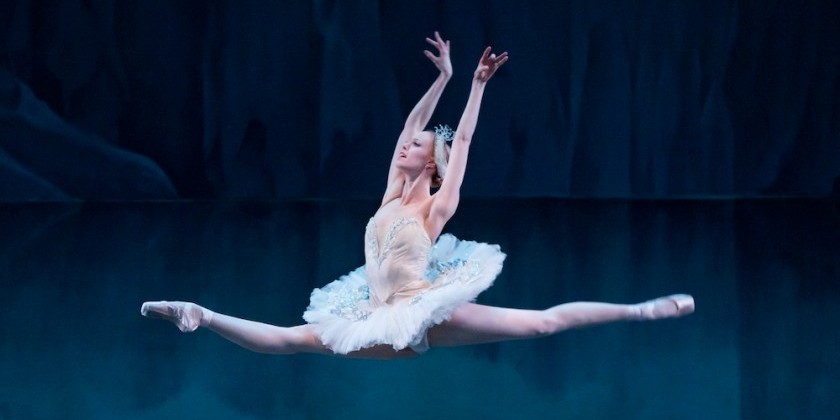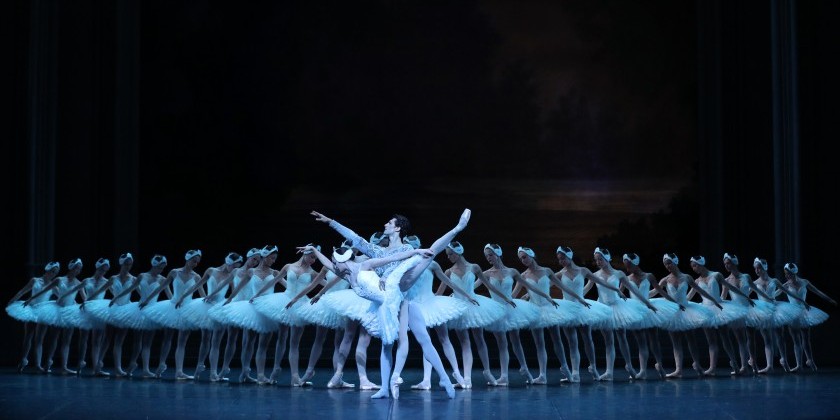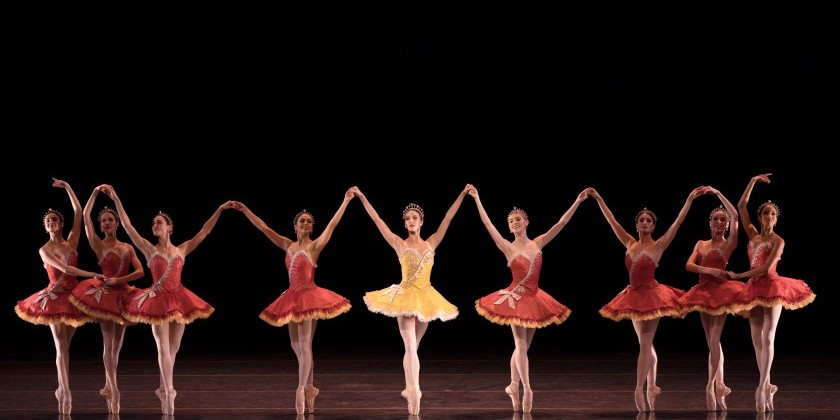Impressions of Liz Gerring's "glacier"
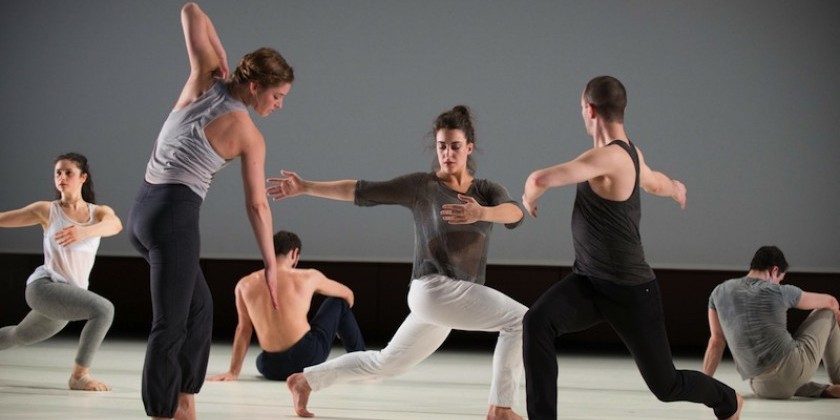
At The Joyce Theater
The Joyce Theater
March 31-April 2, 2015
GLACIER (2013)
Choreographer: Liz Gerring
Composer: Michael J. Schumacher
Production Design: Robert Wierzel
Associate Lighting Design: Amith A. Chandrashaker
Costume Design: Márion Talán
Dancers :Benjamin Asriel, Brandon Collwes, Tony Neidenbach, Adele Nickel, Brandin Steffensen, Jake Szczypek, Jessica Weiss, Claire Westby Understudies: Molly Griffin and Pierre Guilbault
Liz Gerring has always been impressively unpredictable and adept at counterbalancing opposing impulses. In the case of glacier, which her company presented at the Joyce Theater, this unpredictability extends even to the work’s title. Viewers expecting the dance to be set in a stark and frigid winterscape found themselves instead dropped down into a peaceful woodland world inspired by Glacier Lake in Colorado.
The dance’s ambience is set by Michael J. Schumacher’s vivid sound score, which begins with the hum of crickets and the lulling sound of dripping water. A man and woman enter the stage and launch into powerful, solid movements shaped with slow, controlled fluidity. Thighs and arms register strongly as the performers lunge, crouch, swing their arms like discus throwers, or windmill them like propellers. At times the dancers balance on one leg, ceding action to stillness as the sound of fluttering wings or a lonely flute echoes around them. Although glacier passes through many moods over the course of an hour, this initial sequence sets the tone: Athletic and pedestrian in its step palette, the dance is nevertheless largely tranquil and contemplative. And though its eight dancers often form groups, they seem solitary.
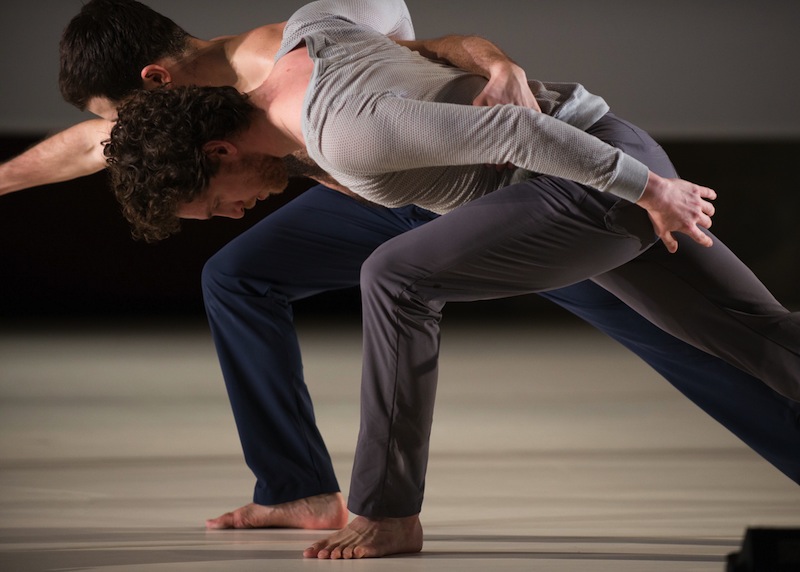
Gerring’s choreography abounds in contradictions of this type. The movements are casual, and she almost never groups her dancers in a straight line. For all that, the dancemaker brings an almost painterly eye to the way she arranges the performers around the stage space, as though she’s constructing a carefully balanced landscape; dancers seated motionless on the floor form a sort of shifting scenery. Glacier is also rife with wonderfully textured rhythms, as when Gerring has two women perform fast pas de bourrées in hip-swerving figure eights among three dancers moving with languid ease. Her use of simultaneous, sharply contrasting rhythms gives the work an almost contrapuntal quality, and it’s often a source of understated humor.

At times, tranquility gives way to full-out propulsion. These moments seem tied to the music, which occasionally superimposes onto its natural sounds those of a chugging locomotive and a clanging motor, the percussive noise of which recalls the shuddering engine of an old jalopy. The dancers run, turn on a dime, cross the space in diagonals of grands jetés or twirls in the air. Brandon Collwes and Claire Westby stand out in a duet in which they take turns hurling into the air with karate kicks and competing against each other with playful bravado.
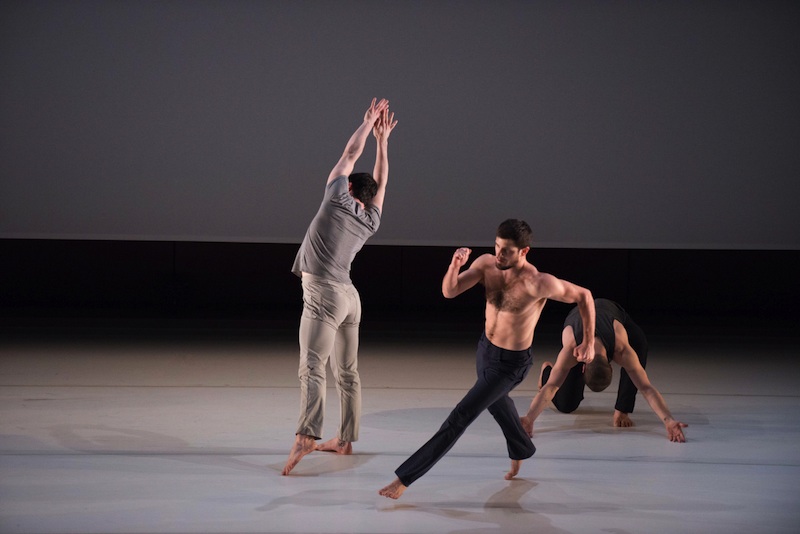
Schumacher’s score, some of whose sounds he recorded at Glacier Lake, takes the dancers through a gale and a thunderous rainstorm; all eight performers skillfully negotiate the choreography’s unexpected shifts in mood and direction. In glacier’s final moments, the overlay of sounds thickens to a cacophony undergirded with an ominous rumbling. Dancers pair up more often, bodies even touch, as when three women lean against three men like precariously angled pillars. But Gerring eschews tidy endings. As the dance closes, night falls, the stage illuminated only by pinpoints of light ranged along the floor. Just before these lights too are extinguished, one lone figure can be seen racing to cleave the space between two others.
Transience is thus the dominant note of the ending, but it’s Gerring’s impressive skill at counterbalancing both transience and permanence, movement and stillness, that makes glacier haunting.












